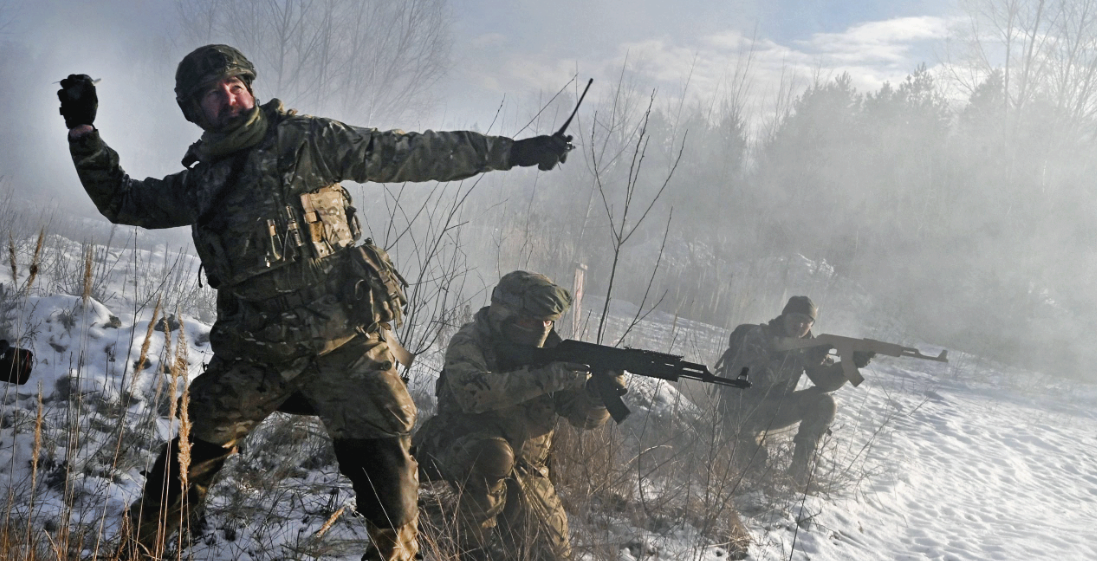The Russia-Ukraine war looks set to be one of the bloodiest in modern history. Even by conservative estimates, both sides are losing hundreds of soldiers per day, putting it within the top 10% of deadliest wars since 1812.
Over the past week, two major military figures in the West appeared to confirm the scale of suffering. Last Friday, Norway’s Chief of Defence, General Eirik Kristoffersen, claimed that Russia has endured 180,000 casualties to Ukraine’s 100,000 (plus another 30,000 Ukrainian civilian casualties). Meanwhile, U.S. Chairman of the Joint Chiefs of Staff Gen. Mark Milley said on Friday that Russian casualties are “significantly well over 100,00 now” (The Sun reports American intelligence services suggesting this figure is around 188,000).
Gathering and assessing accurate casualty data, however, is a fiendishly difficult, and fraught, topic. I spoke to five prominent military analysts, some of whom did not even want to be quoted by name because of the sensitivity of the subject. Most agreed that both Kristoffersen and Milley were likely downplaying the number of Ukrainian casualties while overestimating Russia’s — something that has been a constant fixture of this war.
“There are somewhere approaching 100,000 casualties for Ukraine,” Dara Massicot, a senior policy researcher at RAND, says. But for the Russians, “the number is somewhere around 100,000-130,000 casualties (wounded and killed)— of that number, conservatively, probably 20,000-25,000 are killed in action”. Massicot believes that Milley is being “provided with the best possible information available to the US government”, but her Russian casualty figure is lower than both the U.S. and Norwegian estimates.
In part, this is because of the way information is recorded and delivered: journalists, intelligence services and governments regularly confuse kills with casualties, the latter of which includes those killed, died-of-wounds in hospital, wounded, missing and captured. It is different from KIA (killed in action). We also tend “to take government claims of other people’s losses at face value,” according to military historian Christopher Lawrence. He refers to the Ukrainian claim that 121,480 Russians have been killed, yet their own announced total losses as of 21 August was only 9,000 killed.
Russia, meanwhile, has only provided two casualty reports since the February invasion, the last of which was on 21 September when Defence Minister Sergei Shoigu said that 5,937 Russian troops had been killed. Mediazona, working with the BBC News Russian service and volunteers collecting data based on open source material, puts the figure at 11,662 deaths, with the caveat that it is likely much higher. “Russia underreports deaths to a significant extent and has made discussing combat deaths a state secret,” says Massicot. “To a lesser extent, Ukraine is believed to underreport losses as well”.
Both Russia and Ukraine are clearly incentivised to undercount their losses, both for domestic and international propaganda purposes. But even countries that are not directly involved in the conflict do not want to be seen to be highlighting their ally’s war losses. As such, there is a tendency to emphasise (and even inflate) the statistics that put their enemy in a bad light. “If it’s going to paint a bad picture about Ukraine, the U.S. will downplay the figures or talk about it obliquely,” says Bill Roggio, a military analyst.
Nominally independent institutions aren’t hugely helpful either. The Office of the United Nations High Commissioner for Human Rights (OHCHR) provides fortnightly updates on Ukraine’s civilian casualties, but it routinely underestimates the real figures. As of January 16th 2023, the organisation says that there have been 18,358 casualties even though it admits that the actual number is ‘considerably higher’.
Casualty reports are often viewed as a proxy for how the war is going. But body counts don’t always give an accurate indication — with or without patchy data. Given that its army is three times the size of Ukraine’s, Russia has more expendable manpower, which it is using to grind Kyiv down in a war of attrition. Roggio draws an analogy with the American Civil War, in which the North ground down the South with its superior equipment and greater number of soldiers. By the end of the war, the Unionists had suffered a higher casualty count despite winning.
Unfortunately, analysts rely on fragmentary pieces of information from multiple sources (Ukrainian, Russian, and Western intelligence) to make their own assessments on casualty data. Many pointed to the BBC Russian Service, which tracks burials and funeral announcements, but even this is incomplete.
It may take years before we get a clearer picture, but without doubt the numbers of killed and wounded on both sides are extraordinarily high for a modern conflict, and increasing by the day.











Join the discussion
Join like minded readers that support our journalism by becoming a paid subscriber
To join the discussion in the comments, become a paid subscriber.
Join like minded readers that support our journalism, read unlimited articles and enjoy other subscriber-only benefits.
Subscribe